Spiritual and Knightly Orders: Hospitallers
We praise our names,
But the poverty of the seslovy will become apparent,
When to raise your cross on ramen
We these days will not be ready.
For us Christ, filled with love,
He died in the land that the Turks gave.
We flood the field with enemy blood,
Ile our honor forever confounded!
Conan de Bethue. Translation by E. Vasilyeva
Usually, the Western European knights defeated the Muslims on the battlefield, not only when they fought bravely and decisively - these were the qualities that the knighthood was always famous for, but also acted in an organized manner. But just the organization, the knights often lacked. The reason was that every knight-feudal lord was not very dependent on anyone, since his peasants were in a subsistence economy, and the society itself was notable for non-economic forms of forced labor. Moreover, with personal prowess he could easily surpass both the duke and the count, or even the king himself! Suger, the abbot of Saint-Denis, in his treatise "The Life of Louis VI, Called Tolstoy," explained in detail in 1111 that he decided to punish Hugh du Puise, since he was engaged in robbery, and besieged his castle in Bose. Although the king's army suffered great losses, he still took Hugo's castle, but Hugo himself acted very gently: he only sent him into exile, although he could hang him. Then Hugo returned, said he repented, and Louis VI forgave him. Then Hugo again built a donjon and ... engaged in robbery and other atrocities, so that the king was simply forced to go on a campaign against his obstinate vassal again. And again the donjon Hugo was burned, and Hugo himself was punished, and then, when he repented again, he was pardoned again! But then he repeated the same thing for the third time, and it was here that the king got really angry: he burned his donjon, and sent Hugo himself to the Holy Land to pray for sins before God. From there, he did not return, and only after that the inhabitants of Bose could breathe easy.
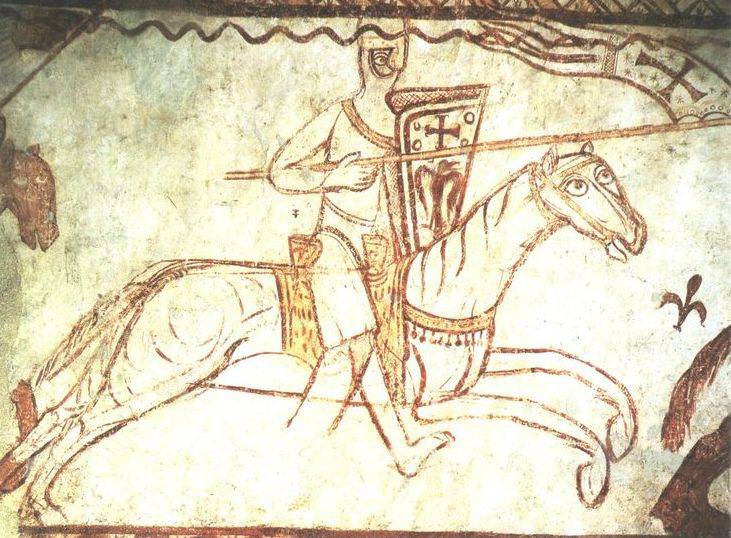
1163 Crusader Warrior - 1200 The fresco on the wall of the chapel of Kressak-Saint-Genis (Charente). The most famous frescoes painted on the north wall. The top row of images tells of the battle with the Saracens, played out in 1163, at the foot of the Crac des Chevaliers castle, when emir Nureddin, who had besieged the castle, was completely defeated by a sudden attack by the Frankish cavalry.
The same, if not greater, arbitrariness, in that era were different and many other knights. And it would be fine in peacetime! No, and on the battlefield they behaved in the same inappropriate way! And if some proud knight rushed to the enemy camp before the others to rob him first, or flee from the enemy when he needed to stand firm in one place and fight the enemy, the king could well lose even the most successfully started battle!
To make the knights different discipline - that was what many commanders dreamed about, but no one could achieve this for many years. Everything changed when the “expeditions” to the East began. There, having become closely acquainted with a completely different Eastern culture for them, the leaders of the West decided that the church itself could become the “basis” of the knightly discipline. And for this you just need to ... make monks of knights and hint at the same time that in this way they will come closer to the coveted salvation!
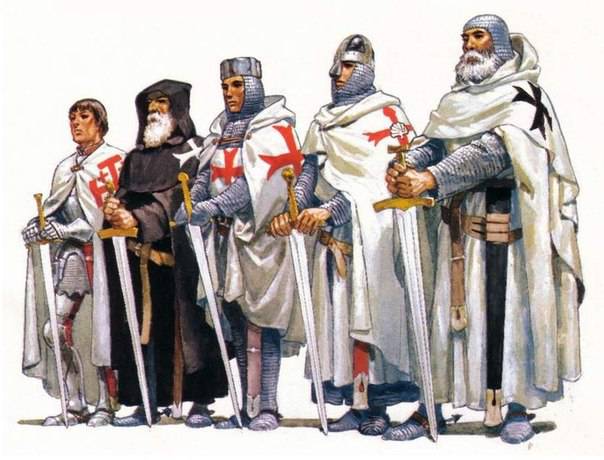
Knights of the Crusaders of Palestine: from left to right - Knight-Crusader of the Order of the Holy Sepulcher of Jerusalem (founded in 1099); hospitaller; Templar Knight of the Order of St. Jacob Kampostelsky, Teutonic Knight of the Order of Sts. Maria Teutonic.
So here and there spiritual and knightly orders crusading knights started in distant Palestine. But they were only copied from very similar "organizations" among Muslims! After all, precisely in the East, at the end of the XI-beginning of the XII century, such military-religious orders as Rakhasia, Shuhayniy, Khaliliya and Nubuvia appeared, some of which Caliph al-Nasir united in 1182 into one large and one for all Muslims knightly Order of Futuvva. The members of this order existed a purely knightly rite when the entrant was girded with a sword, then the candidate drank "sacred" salt water from a special bowl, put on special trousers and even, like in Europe, received a blow with the flat side of the sword or a hand on the shoulder. That is, the knighthood itself as such has come to Europe from the East, which, by the way, is also mentioned in the poem by Firdousi "Shakhname"!
Although, who was the first and from whom he borrowed the very idea of the spiritual and knightly order also, in general, is unknown - or rather, this is a very controversial issue! After all, long before these events in African lands, namely Ethiopia, already existed ... ancient Christian Order of St. Anthony, and it is quite rightly historians consider the oldest among all the other orders of chivalry in the world.
The cross was a popular figure on the ancient knightly coat of arms.
It is believed that it was founded by the Negus - the ruler of Ethiopia, who was known in the West under the name "Prester John", after St. Anthony either in 357, or in 358, he slept in the Lord. Then many of his followers decided to go into the desert, where they took the vows of the monastic life of St.. Basil and created a monastery "name and heritage of St.. Anthony. The order itself was founded in 370 from the birth of Christ, although even a later date compared to all other orders will still be "early."
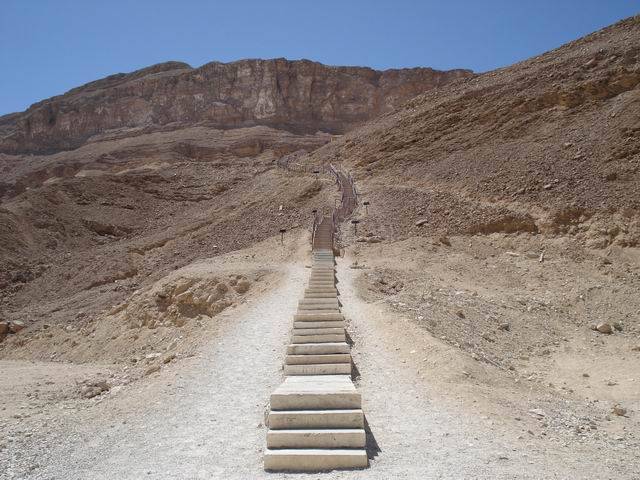
Staircase to the cave of St. Anthony the Great. Probably, you can find salvation ...
Orders of the same name were later in Italy, in France and in Spain, and were branches of the Order, whose headquarters were in Constantinople. Interestingly, the Ethiopian order has survived to our time. The head of the order is his grandmaster and at the same time the President of the Royal Council of Ethiopia. Take in new members well, very rarely, and as for the vows - then, yes, they are very chivalrous. The badge of the order has two degrees - the Grand Knight's Cross and the companion cross. He has the right to indicate in his official titling the initials KGCA (Knight Grand Cross - Knight of the Grand Cross) and CA (Companion of the Order of St. Anthony - Companion of the Order of St. Anthony).
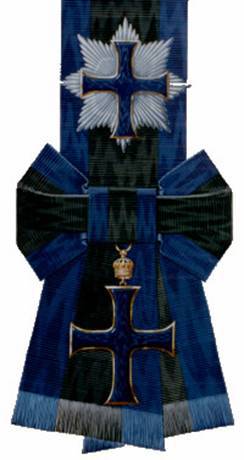
Crosses of the Order of St. Anthony.
Both signs of the order have the appearance of an Ethiopian golden cross, covered with blue enamel, and on top they are also surmounted by the imperial crown of Ethiopia. But Breast Star - Order of the Cross, the Crown has not, and is superimposed on an eight-pointed silver star. The order ribbon is traditionally sewn from moire silk, has a bow at the thigh, and its color is black with blue stripes on the edges.
Knights clothes are black with a blue mantle on his chest where the blue three-pointed cross was embroidered. The older knights were distinguished by double crosses of the same color. The headquarters of the order was located on the island of Meroe (in Sudan), and throughout Ethiopia, the order belonged to both women's and numerous monasteries. The Order was simply incredibly rich: its annual income was not less than two million gold. Thus, the idea of such orders was born for the first time not in the East, and, as you see, not in Europe, but in ... sultry Christian Ethiopia!
Well, and the palm in the creation of the very first order in Palestine belonged to the Johannites or the Hospitallers. Usually, non-specialists associate its basis with the first crusade, although the real story Order is a little different. It all started when Emperor Constantine came to Jerusalem to find here (and he found it!) The Lord’s Life-giving Cross, well, the very one on which they crucified Jesus Christ. Then there were many other holy places in the city that were mentioned in the Gospel, and temples were immediately erected in these places.
It is clear that any Christian would be very pleased to visit all these places, receive grace from God and hope for the salvation of his sinful soul. But the pilgrim’s journey to the Holy Land was filled with dangers. And when someone got there, he often took monastic vows, and remained to continue to do good to other pilgrims at the same monastic hospitals. In the 638 year, Jerusalem was seized by the Arabs, but for all this “activity” the conditions remained virtually unchanged.
And when in the 10th century Jerusalem turned into a world center of Christian piety, a pious merchant was found - yes, there were then such people named Constantine di Panteleone, originally from the Italian trade republic Amalfi, who in 1048 asked permission to build the Egyptian Sultan the city of another shelter for sick pilgrims. It was named the Jerusalem Hospital of St. John, and the white eight-pointed cross of Amalfi became the emblem of the hospital. That is why his servants were called Johnites, or Hospitallers (from. Lat. Hospitalis - "hospitable").
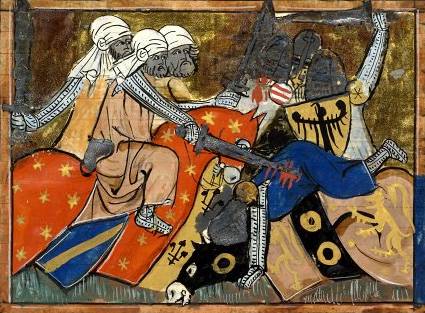
Battle for Agra. A miniature from the manuscript of Guillaume de Tire, The Outremer Story, 14th century. (National Library of France).
For whole 50 years, the Hospitallers lived quite peacefully - they followed the sick and prayed, but then the Crusaders besieged Jerusalem. According to legend, Christians, like all other residents of the city, were "put on the walls." Then cunning loannites began dropping on the head of the Knights of Christians are not stones, and fresh baked bread! The authorities immediately accused the Johnites of treason, but a miracle happened: right before the judges, this bread turned into stone, which proved their innocence, so that they were justified! When 15 July 1099 of Jerusalem fell, Duke Gottfried of Bouillon rewarded courageous monks, and some of his knights even became members of their fraternity in order to protect the pilgrims on their way to the holy city. First, the status of the order was approved by the ruler of the Kingdom of Jerusalem Baudouin I in 1104, and nine years later, Pope Paschal II confirmed his decision with his bull. And this Charter of Baudouin I and the papal bull have survived to this day and are located in the National Library of the Island of Malta in the city of La Valletta.
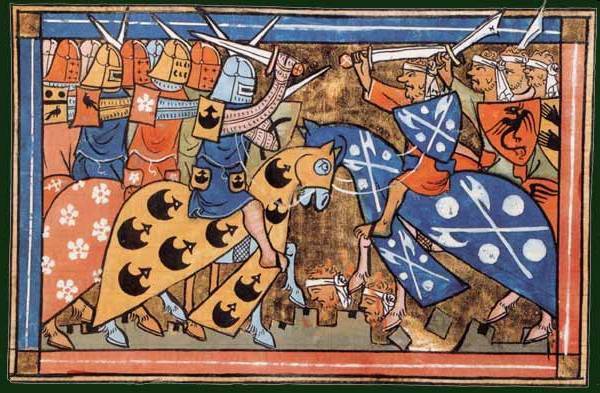
Louis VII and King Baudouin III of Jerusalem (left) battling the Saracens (right). A miniature from the manuscript of Guillaume de Tire, The Outremer Story, 14th century. (National Library of France).
The military brothers of the order were not mentioned in the documents until 1200, when their division into warrior brothers (blessed for wearing and using weapons), Brothers-doctors and chaplains brothers, who performed in the order the necessary religious rites. Military brothers submitted only to the Pope and the Grand Master of the Order. At the same time they owned lands, churches and cemeteries. Tax they were released, and it was found that even the bishops, and those that had no right to excommunicate them from the church!
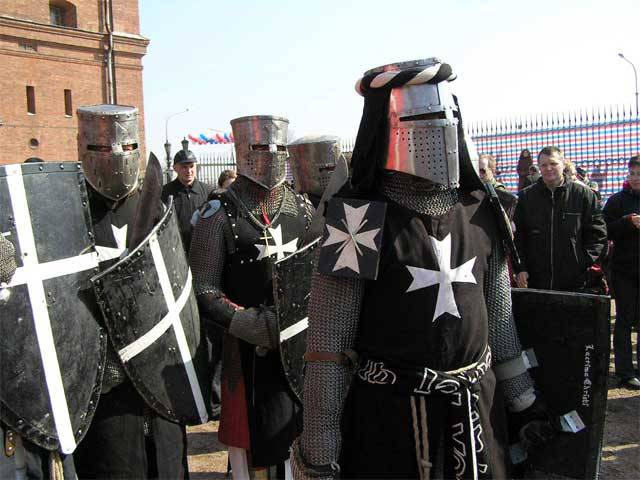
Modern hospitallers reenactors.
It received its name Jerusalem Order of the Knights Hospitallers of St. John in 1120, with the first master Raymond Dupuis. Along with the usual monastic attire, the knights wore a black cloak, on the left shoulder of which a white eight-pointed cross was sewn. In the campaign, they wore surcoe usually scarlet in color with a white linen cross on their chest with flared ends. They symbolized the following: the four ends of the cross are the four Christian virtues, and the eight corners are the eight good qualities of a true believer. And, of course, the cross on a bloody background symbolized the knightly fortitude and loyalty to the Lord. The banner of the order was a rectangular panel of red color with a white cross.
Fort in Larnaca, Cyprus. Here, too, were the Crusaders.
In 1291, the Order left Palestine and moved to the island of Cyprus, and after 20 years it settled on the island of Rhodes, where it remained until the 1523 year, when the Turks drove it out from there. 42 years later, the Knights moved to Malta and became known as the "Knights of Malta". Well, the hospital-based order in various European countries, were at that time the real center of medicine.
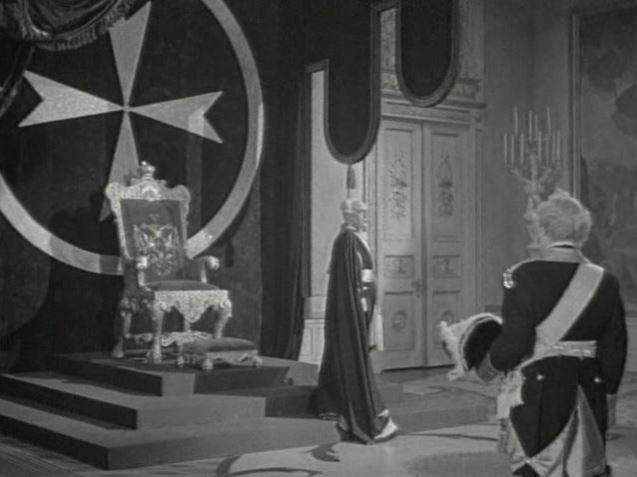
Shot from the film "Suvorov" (1940). On the emperor Pavel the mantle with the Maltese cross is clearly visible. Well, he loved knightly romance, what to do ... In the movie we see that during the meeting of Suvorov with Pavel on Pavel I wears the mantle of the master of the Order of Malta. It is safe to say that what we see does not correspond to the story. Paul I was indeed proclaimed Grand Master of the Order of Malta, but only 6 December 1798 of the year, that is, more than ten months after this audience.
In the 1798, Malta fell under the rule of Napoleon, which caused a massive scattering of its members around the world. Emperor Pavel I invited the "Knights of Malta" in Russia and in every way he indulged them, but after his death they had to leave Russia for Rome. Today, the order has a complex name, which sounds like this: Sovereign Military Order of the Hospitallers of St. John of Jerusalem, Rhodes and Maltese. Note that in the battles with Muslims in Palestine, the Hospitallers constantly competed with the Templars, because of which they were placed away from each other. For example, the Knights of St. John in the rear, and the Knights Templar in the forefront, and in between all the other troops.
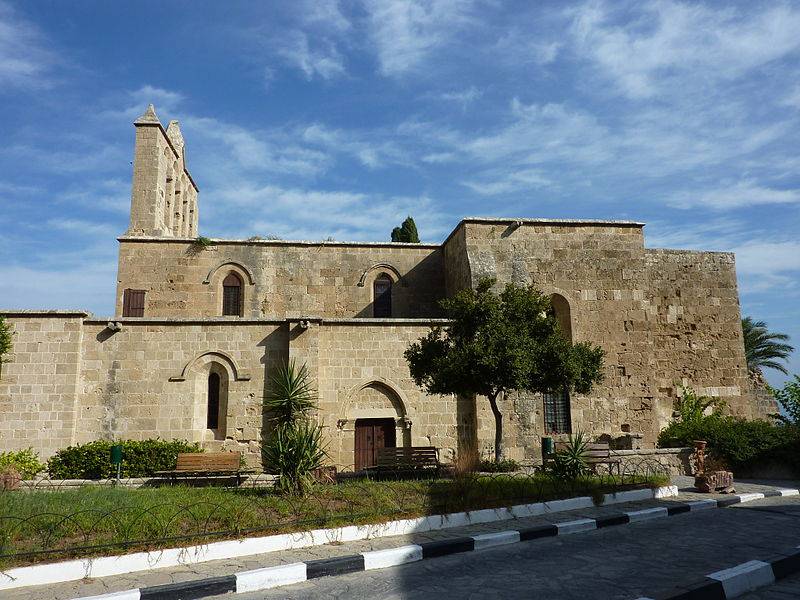
Bellapais Abbey, Northern Cyprus. It was founded by the Hospitallers, but now the Orthodox Greek Church is here.
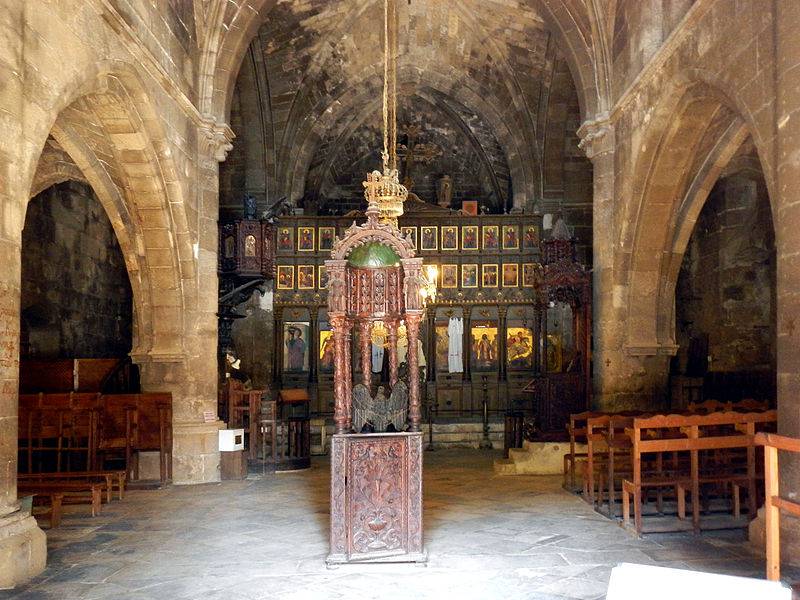
And this is how it looks today inside.
Well, these are the dungeons of the abbey. When it is hot outside, pleasant coolness reigns here.
Of course, the Hospitallers were not only warriors and healers, but also excellent builders, so much they built various abbeys, churches and cathedrals. In this they also competed with the Templars. After moving to Cyprus, they built there many buildings of cult nature that have survived to the present day.
St. Nicholas Cathedral, converted by Muslims into a mosque.
Behind the Cathedral of St. Nicholas looks no less impressive than from the front.
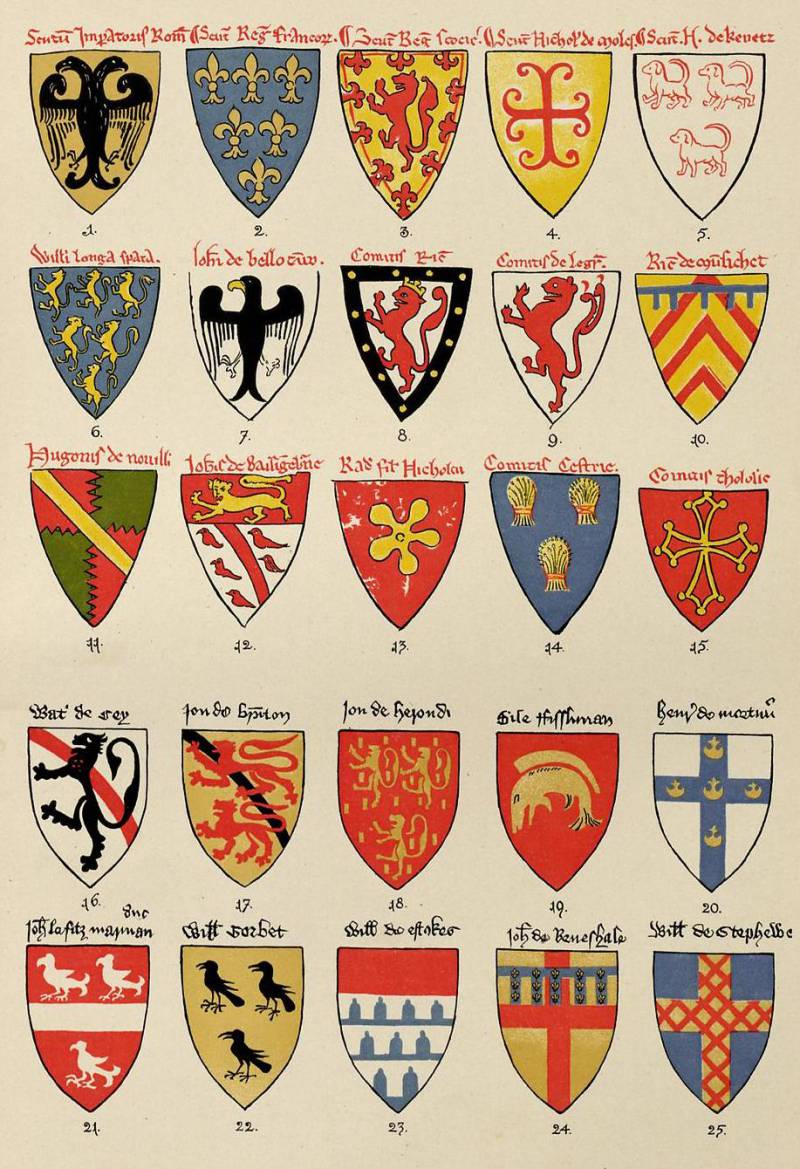
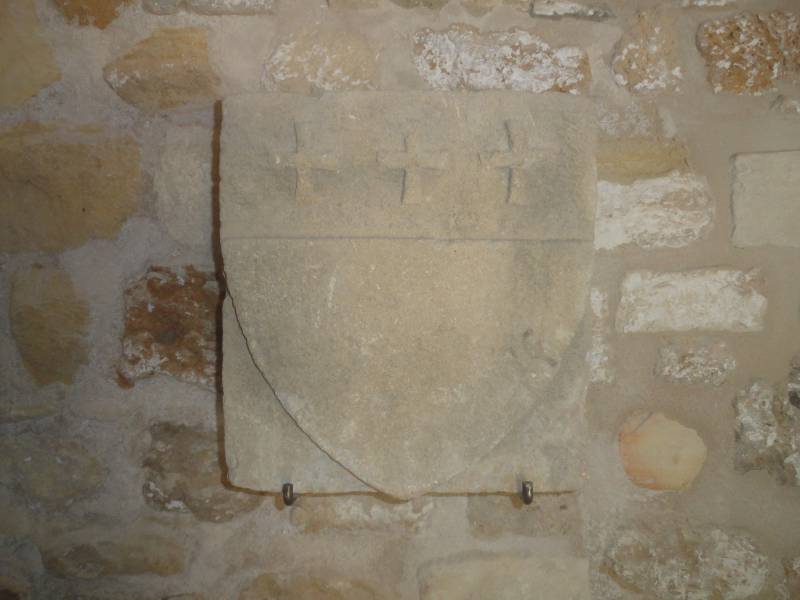
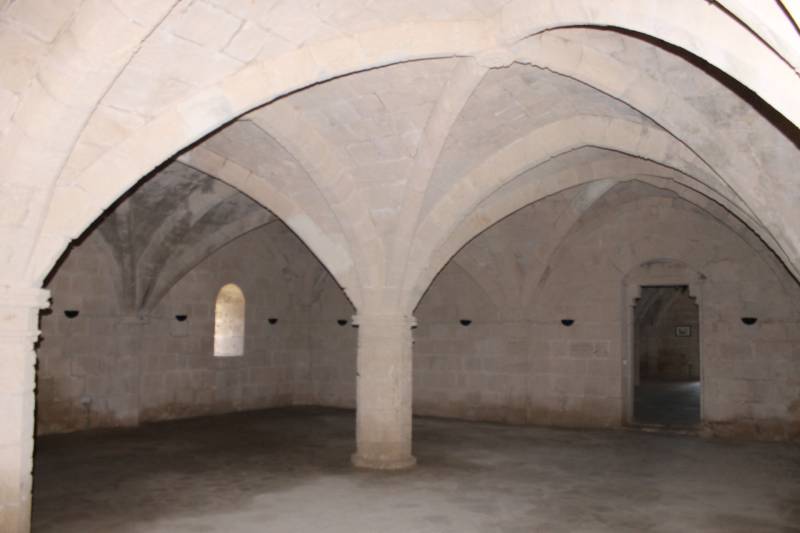
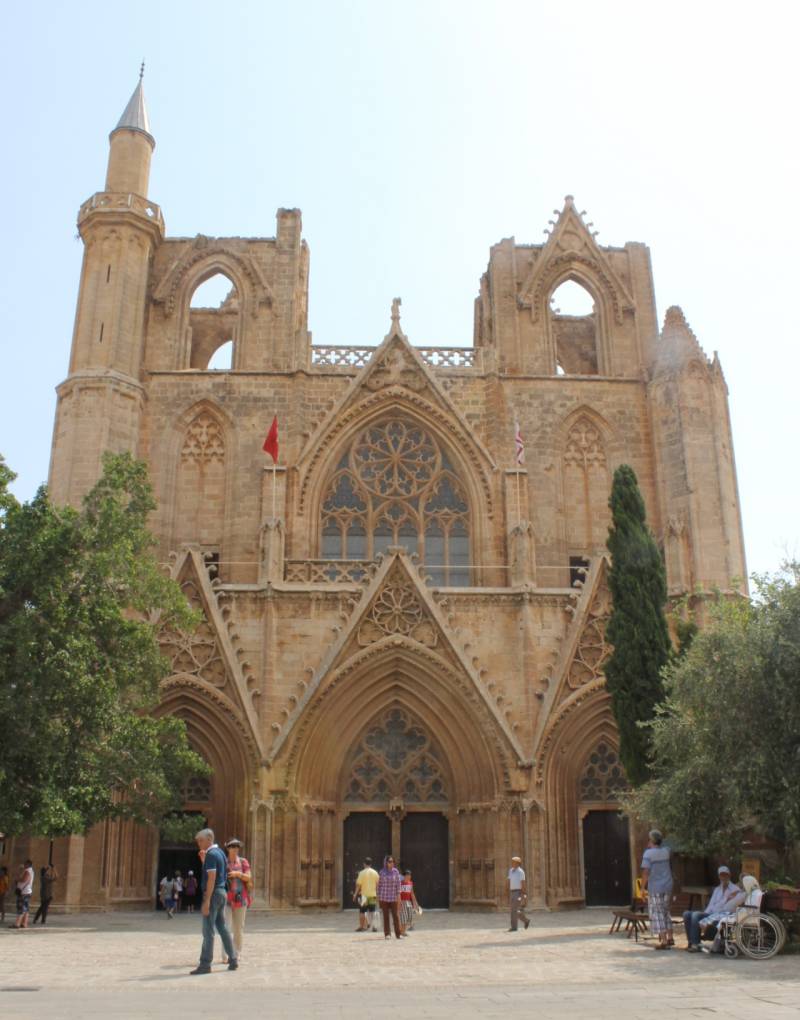
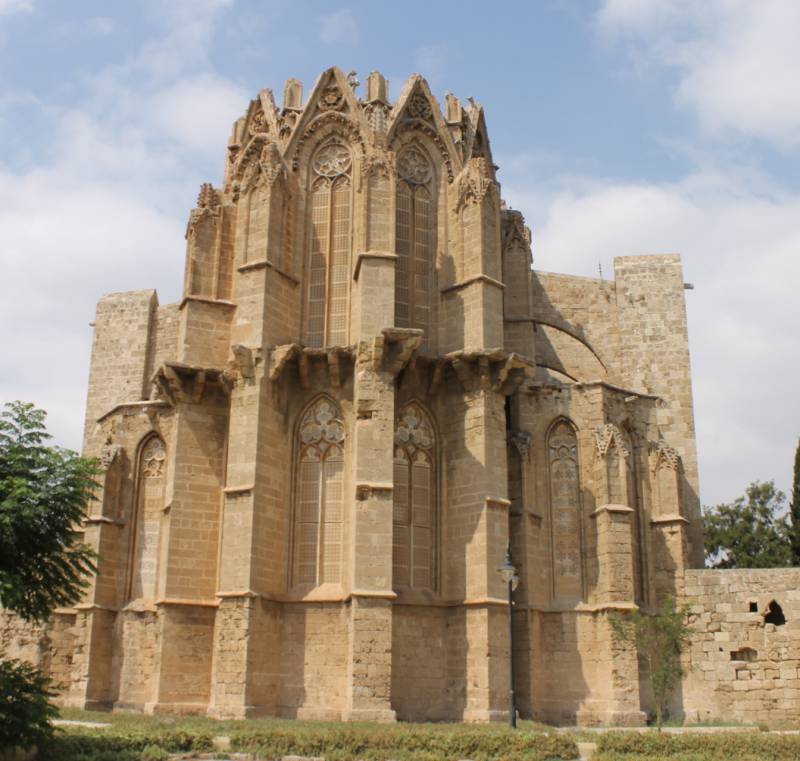
Information